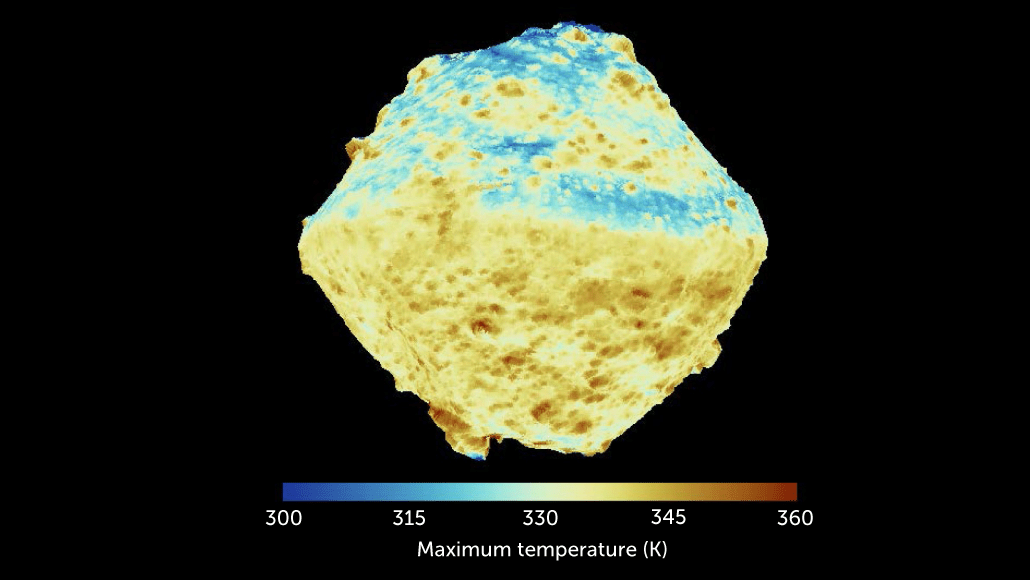The asteroid Ryugu has a texture like freeze-dried coffee
This porous space rock could reveal details of how planets formed

The Hayabusa2 spacecraft measured the maximum temperatures during one full rotation of the asteroid Ryugu and found that most of the asteroid stays cool. Blue regions are around 300 kelvins (27° Celsius) and yellow are around 330 kelvins (57° C). Just a few hot spots, in red, were dense boulders that reached 360 kelvins (87° C).
T. Okada et al/Nature 2020